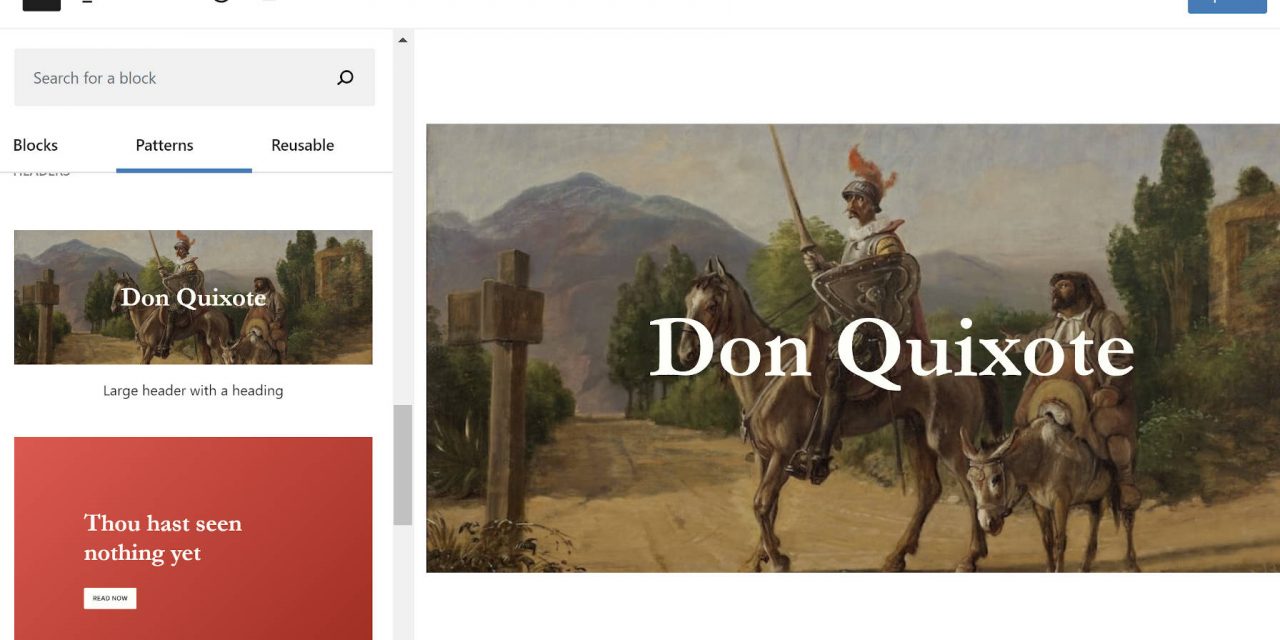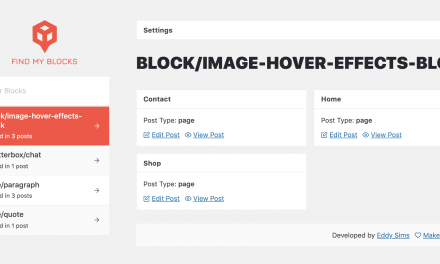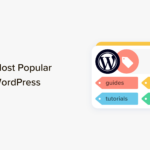On Wednesday, the Gutenberg team pushed what was primarily minor enhancements and bug fixes to the WordPress platform’s primary project. Everyone is mostly gearing up for the WordPress 5.5 release, so we are not seeing any major features dropping at the moment. However, steady work continues on improving the Gutenberg plugin.
Gutenberg 8.7 contains over 30 bug fixes, in which nearly a third were accessibility-related changes. Around half of the new enhancements focused on updating block patterns.
Users can look forward to several minor enhancements that should improve the editor, such as the Buttons block getting a proper preview in the inserter. The monitoring solution behind auto-saving should also work more consistently with this update.
The biggest user-facing enhancement is the change in dealing with invalid blocks. The latest version of the plugin makes the attempt block recovery option the default. This change hides the resolve, convert to classic, and convert to HTML options under the sub-menu (ellipsis button). This is a nice touch and makes the most sense. Attempting to recover a block should generally be the first step when correcting invalid block output.
Block Pattern Updates
I can now proceed to eat my earlier words of frustration with block patterns. Or, perhaps I can praise myself in some small way for pushing the Gutenberg team to up their game. I was unhappy with the abysmal designs that were originally going to ship with WordPress 5.5. The team has taken what was looking to be one of the most disappointing first outings for a feature and turned it into something the project can be proud of.
It did not take much. A photo here. A touch of pizazz there. The Don Quixote images and text bring a cohesive theme to the patterns, breathing a touch of life in an otherwise desolate and barren feature.
The “large header with a heading” pattern dropped the blinding background gradient and replaced it with an image. The “quote” pattern now has a face instead of an impersonal icon. Even the “two images side by side” pattern fits in thematically.
If anything, I am not a fan of the long pattern names. “Large header with a heading and a button” and “three columns of text with buttons” do not exactly roll off the tongue. Nor do they make it easy to write about them. I do not wish the pain of typing them out on any support volunteers.
At least we are working with a somewhat decent set of patterns going forward, and that is enough to be thankful for at this point. I will now await the first theme author to truly impress me with custom patterns.
Experimental Features Update

Much of the work for this release centered on the plugin’s experimental features. The bulk of it went toward post-related blocks. At this point, these features are so experimental that even experienced developers outside of the inner Gutenberg circle have trouble following the progress. It is nice to see the continual movement in this area. However, from a user viewpoint, it is not even ready for a quick look. Enable at your own risk. Wait until the product is a bit more polished.
I typically enable Gutenberg’s experimental features once a month or so. I want to keep up with the progress and not feel out of the loop. Such was the case over the past couple of days as I tinkered a bit more with the full-site editing and demo templates features. I am unsure what I was hoping for. Mostly, I wanted some indication of a bright future — one that I fully expect to be realized at some point. I wanted to be wowed.
I understand why the wow factor is not there. The feature is far from ready. More than that, I know that, as a developer, you have a vision of the finished product in your head, and as the UI is in flux, others cannot see that vision. It is a step-by-step process that you simply have to continue working through.
I am still of the belief that full-site editing will not be close to a viable feature until 2021. Even with all hands on deck, four months is too small of a window to make anything remotely competitive to existing solutions out there. When full-site editing does land in core WordPress, it needs to do so with a bang, not a whimper.
















